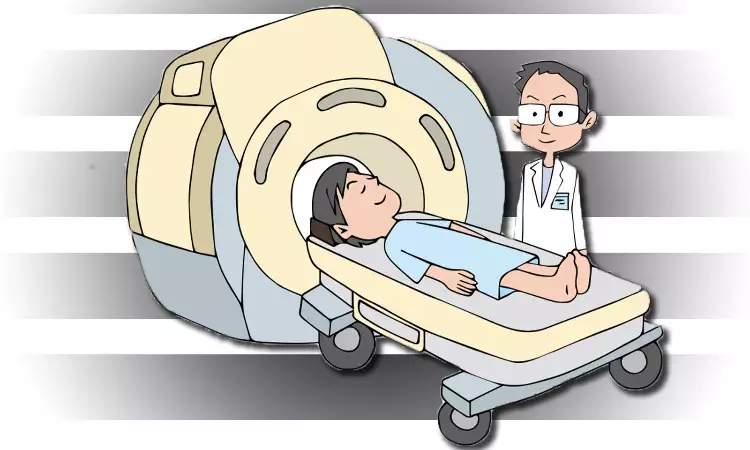- Home
- Medical news & Guidelines
- Anesthesiology
- Cardiology and CTVS
- Critical Care
- Dentistry
- Dermatology
- Diabetes and Endocrinology
- ENT
- Gastroenterology
- Medicine
- Nephrology
- Neurology
- Obstretics-Gynaecology
- Oncology
- Ophthalmology
- Orthopaedics
- Pediatrics-Neonatology
- Psychiatry
- Pulmonology
- Radiology
- Surgery
- Urology
- Laboratory Medicine
- Diet
- Nursing
- Paramedical
- Physiotherapy
- Health news
- Fact Check
- Bone Health Fact Check
- Brain Health Fact Check
- Cancer Related Fact Check
- Child Care Fact Check
- Dental and oral health fact check
- Diabetes and metabolic health fact check
- Diet and Nutrition Fact Check
- Eye and ENT Care Fact Check
- Fitness fact check
- Gut health fact check
- Heart health fact check
- Kidney health fact check
- Medical education fact check
- Men's health fact check
- Respiratory fact check
- Skin and hair care fact check
- Vaccine and Immunization fact check
- Women's health fact check
- AYUSH
- State News
- Andaman and Nicobar Islands
- Andhra Pradesh
- Arunachal Pradesh
- Assam
- Bihar
- Chandigarh
- Chattisgarh
- Dadra and Nagar Haveli
- Daman and Diu
- Delhi
- Goa
- Gujarat
- Haryana
- Himachal Pradesh
- Jammu & Kashmir
- Jharkhand
- Karnataka
- Kerala
- Ladakh
- Lakshadweep
- Madhya Pradesh
- Maharashtra
- Manipur
- Meghalaya
- Mizoram
- Nagaland
- Odisha
- Puducherry
- Punjab
- Rajasthan
- Sikkim
- Tamil Nadu
- Telangana
- Tripura
- Uttar Pradesh
- Uttrakhand
- West Bengal
- Medical Education
- Industry
MRI scans more precisely define and detect some abnormalities in unborn babies

MRI scanning can more precisely define and detect head, neck, thoracic, abdominal and spinal malformations in unborn babies, finds a large multidisciplinary study led by King's College London with Evelina London Children's Hospital, Great Ormond Street Hospital and UCL.
In the study, published today in Lancet Child and Adolescent Health, the team of researchers and clinicians demonstrate the ways that MRI scanning can show malformations in great detail, including their effect on surrounding structures. Importantly, they note that MRI is a very safe procedure for pregnant women and their babies.
They say the work is invaluable both to clinicians caring for babies before they are born and for teams planning care of the baby after delivery.
Recent research has concentrated on correcting for fetal movement in fetal brain MRI and, more recently, for imaging the fetal heart. However, there is an increasing demand to assess the entire fetus with MRI and research from King's College London School of Biomedical Engineering & Imaging Sciences at Evelina London Children's Hospital, have recently been able to develop a post-acquisition pipeline to motion correct and volume reconstruct images of the whole fetal body.
Lead researcher, Professor Mary Rutherford, from the School of Biomedical Engineering & Imaging Sciences said ultrasound remains the gold standard for fetal screening and indeed is complementary to these optimised MRI approaches for evaluating abnormalities of the fetal body.
"Until now, ultrasound has been the modality of choice to diagnose those anomalies. However, sometimes the ability of ultrasound to define the most detailed anatomy is limited. MRI scanning offers the potential to more precisely define malformations that could help support clinicians in their planning of care and counselling of parents".
MRI is commonly used in the classification of fetal brain anomalies. Although its use in fetal body anomalies is less widely adopted, advances have led to the validation of its role in the antenatal investigation of several conditions including the investigation of fetuses with spina bifida: imaging of the fetal brain along with the spinal cord is an important factor in evaluating which patients could benefit from fetal surgery.
For fetal neck masses, MRI provides a clear advantage over conventional ultrasound for assessing tumour extension and giving a 3D visualisation of the tumour's relation to the airway.
MRI may also be better than ultrasound for distinguishing between normal and abnormal lung tissue, and in making other diagnoses such as diaphragmatic hernia--particularly in late gestation, when doing so with ultrasound is challenging.
New approaches to imaging the fetal body with MRI allows both motion correction of the fetal images and volume reconstructions of body organs and defects. Researchers say this improves visualisation and therefore detection and characterisation of abnormalities.
The project brought together surgeons, fetal medicine specialists, radiologists and physicists to review the use of magnetic resonance imaging to investigate conditions in the unborn baby; this approach has already been integrated into clinical practice at Evelina London, which is part of Guy's and St Thomas' NHS Foundation Trust. Videos and images are also available for viewing.
Ongoing work is focused on a fully automated process suitable for clinical translation and wider dissemination into clinical practice.
Hina Zahid Joined Medical Dialogue in 2017 with a passion to work as a Reporter. She coordinates with various national and international journals and association and covers all the stories related to Medical guidelines, Medical Journals, rare medical surgeries as well as all the updates in the medical field. Email: editorial@medicaldialogues.in. Contact no. 011-43720751
Dr Kamal Kant Kohli-MBBS, DTCD- a chest specialist with more than 30 years of practice and a flair for writing clinical articles, Dr Kamal Kant Kohli joined Medical Dialogues as a Chief Editor of Medical News. Besides writing articles, as an editor, he proofreads and verifies all the medical content published on Medical Dialogues including those coming from journals, studies,medical conferences,guidelines etc. Email: drkohli@medicaldialogues.in. Contact no. 011-43720751


